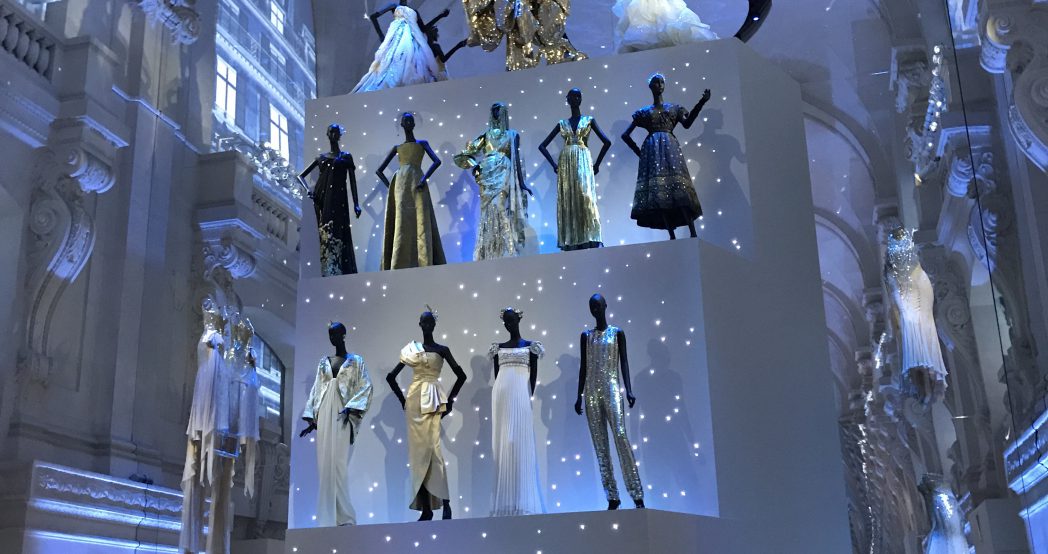Still buzzing from the afternoon’s Haute Couture show, it was time to change outfits and head to the evenings event, the launch of the exhibition Christian Dior: Couturier de Reve, celebrating the 70th anniversary of Monsieur Dior’s first collection.
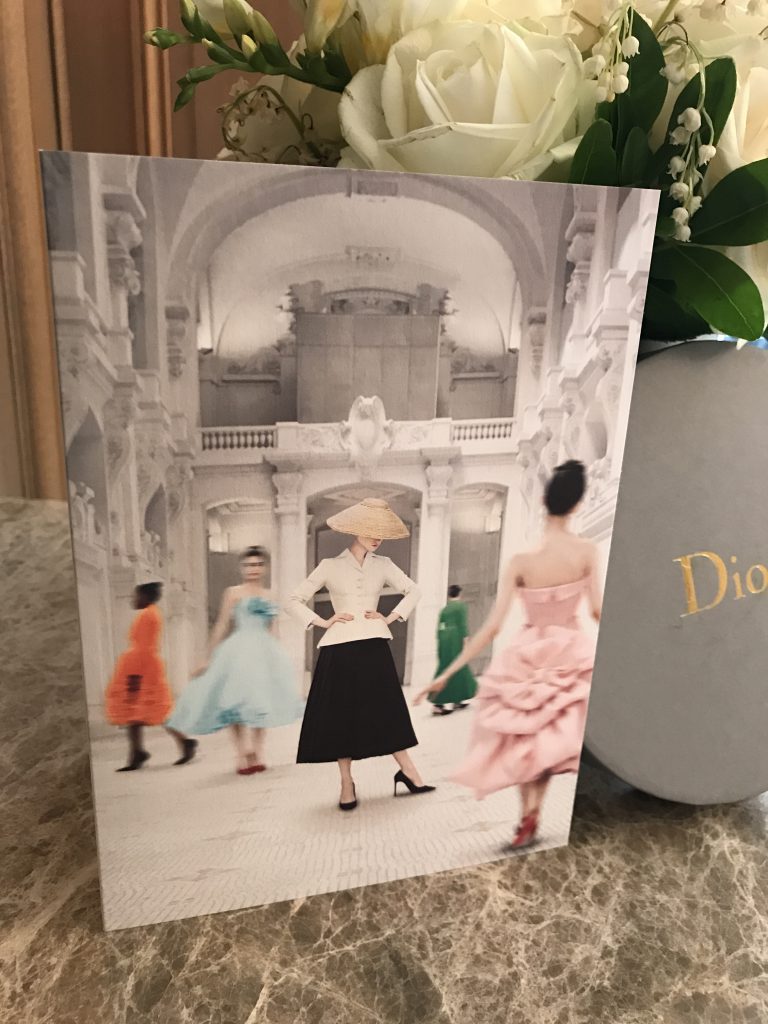
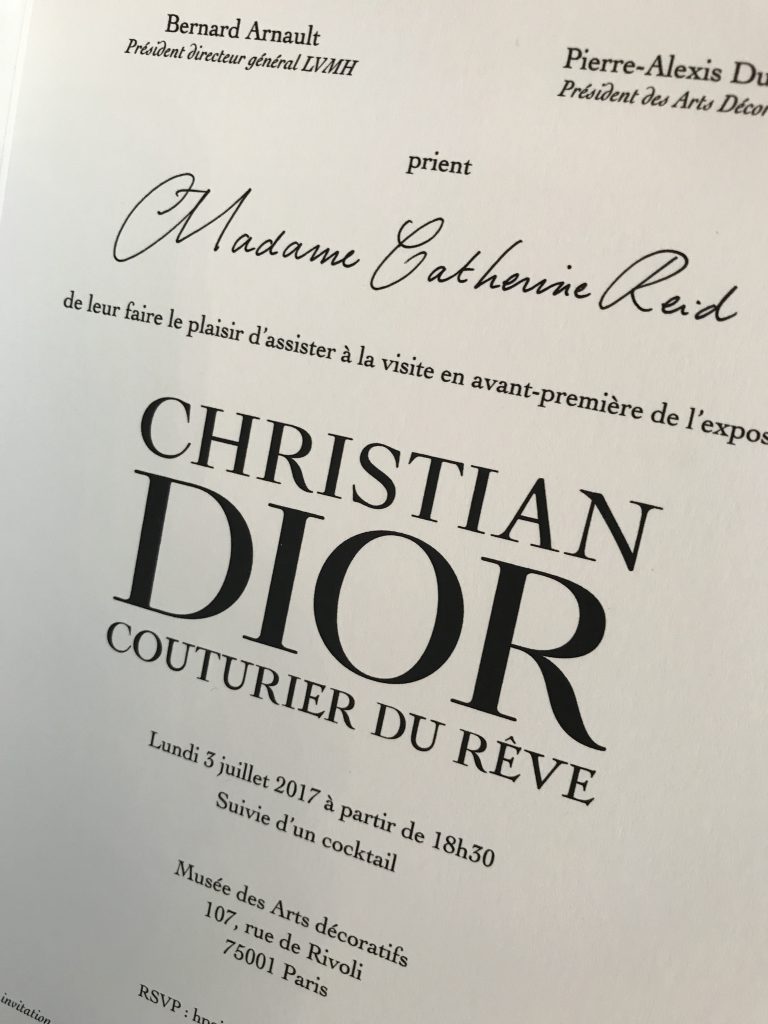
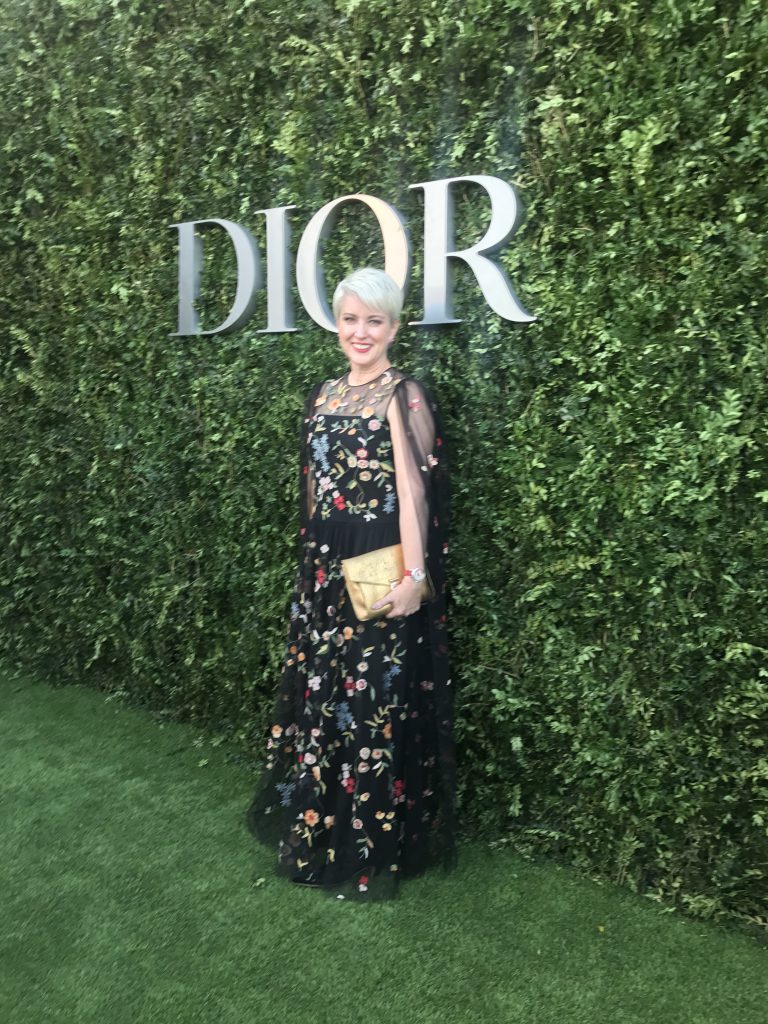
The exhibition is at the Musee des Arts Decoratifs, and the evening started with a cocktail party in the museum gardens.
New Look topiary dotted the garden,

but there were also tributes to Dior fragrances, with a topiary Miss Dior bottle
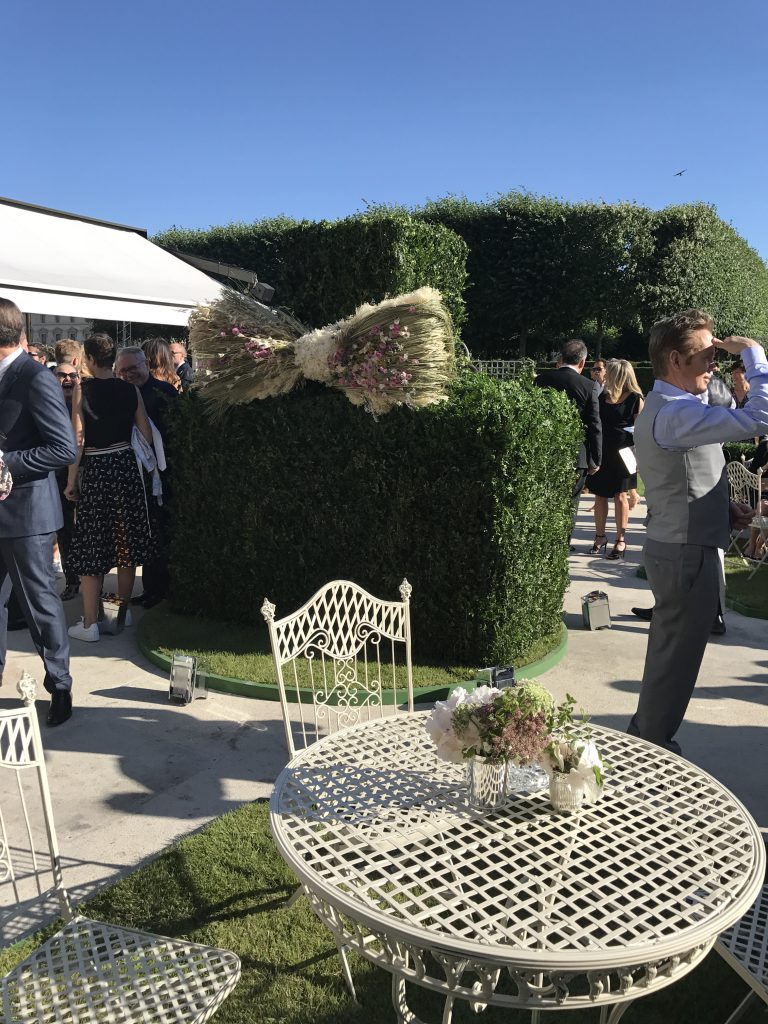
and a floral and wheat representation of the dress that Natalie Portman wore in a recent Miss Dior campaign.
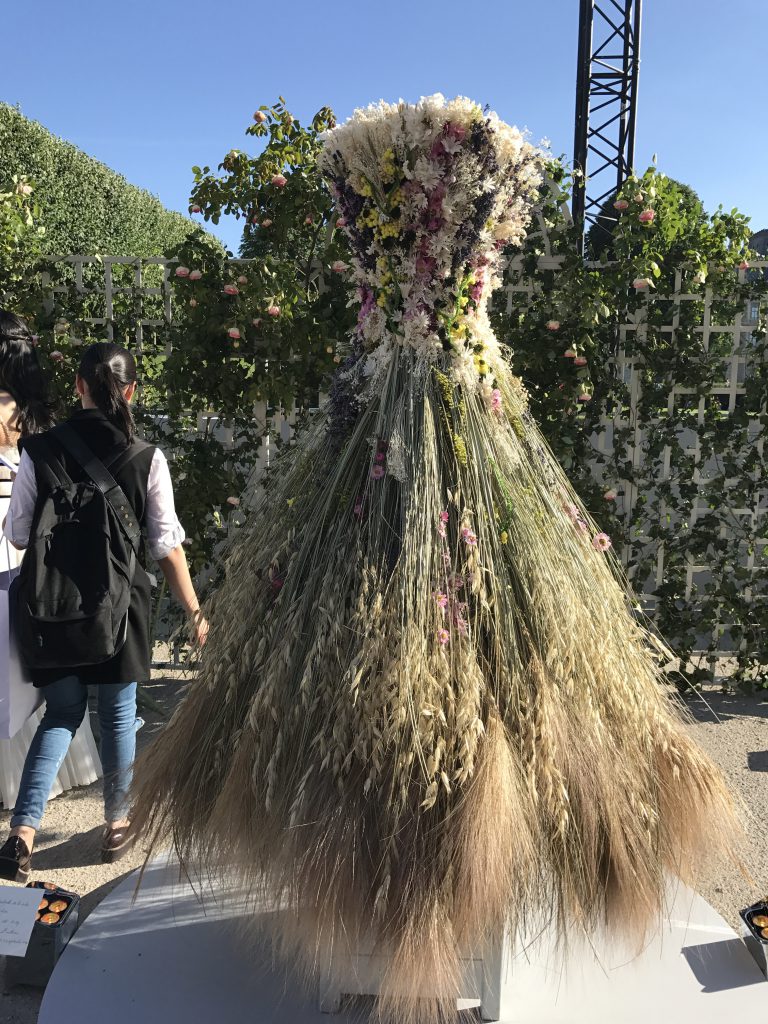
The garden party was fabulous, but paled into insignificance once we moved inside and viewed the exhibtion. It’s the biggest Dior retrospective ever staged, and fills 32 000 sq foot of the museum. This is not going to be a short post as I share some of my highlights!
The exhibition is split into two halves, with the iconic Dior Bar jacket the entry centrepiece.
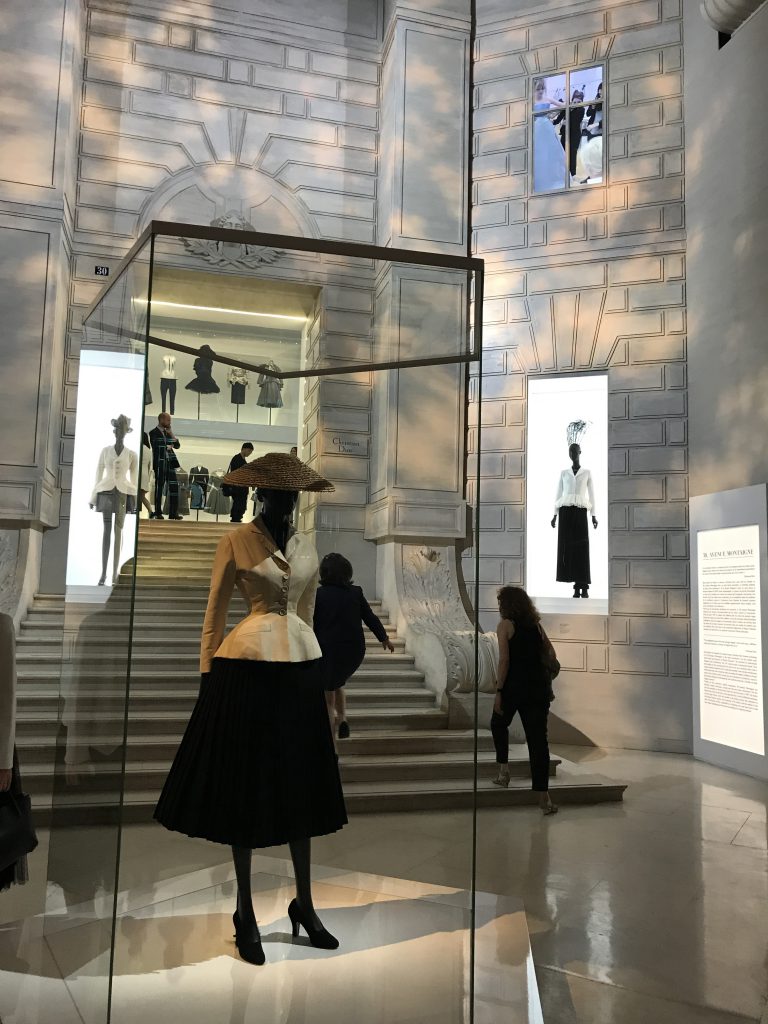
Stepping into a room with floor to ceiling imagery of early editorial photos was impressive enough,

but then went to a whole new level as the images faded to revel the original clothing from the shot.

We then moved into a colour themed mashup of the works of all of the house designers, which beautifully illustrates the consistent themes which have carried through the various creative directors, each with their own unique interpretations.
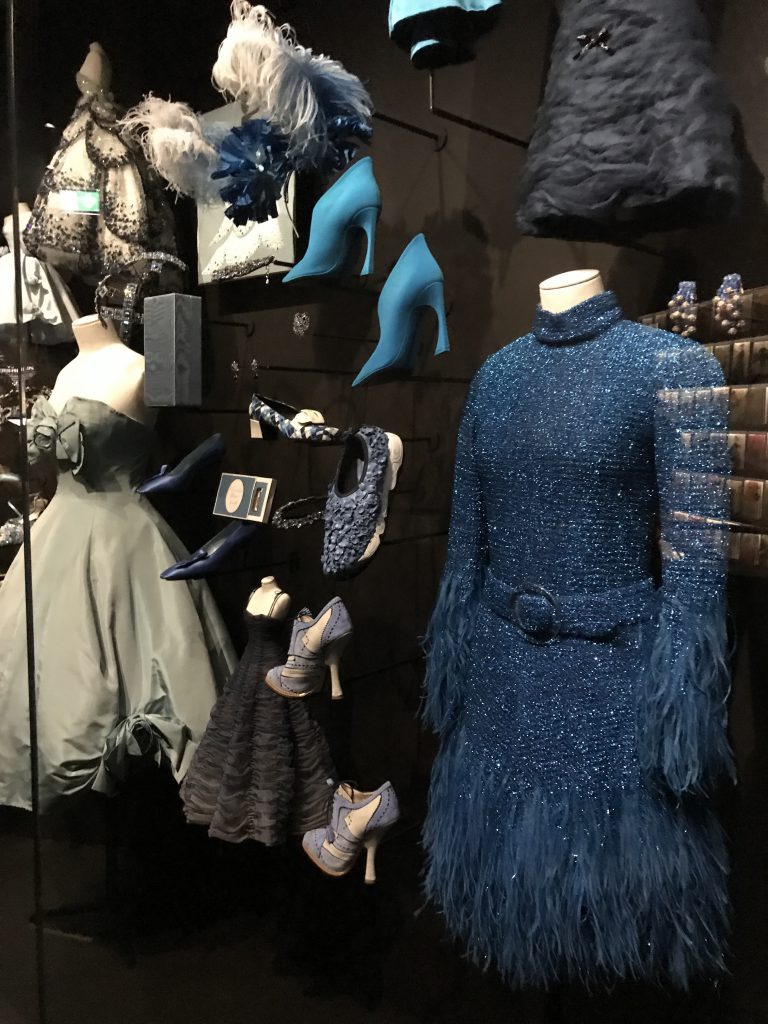
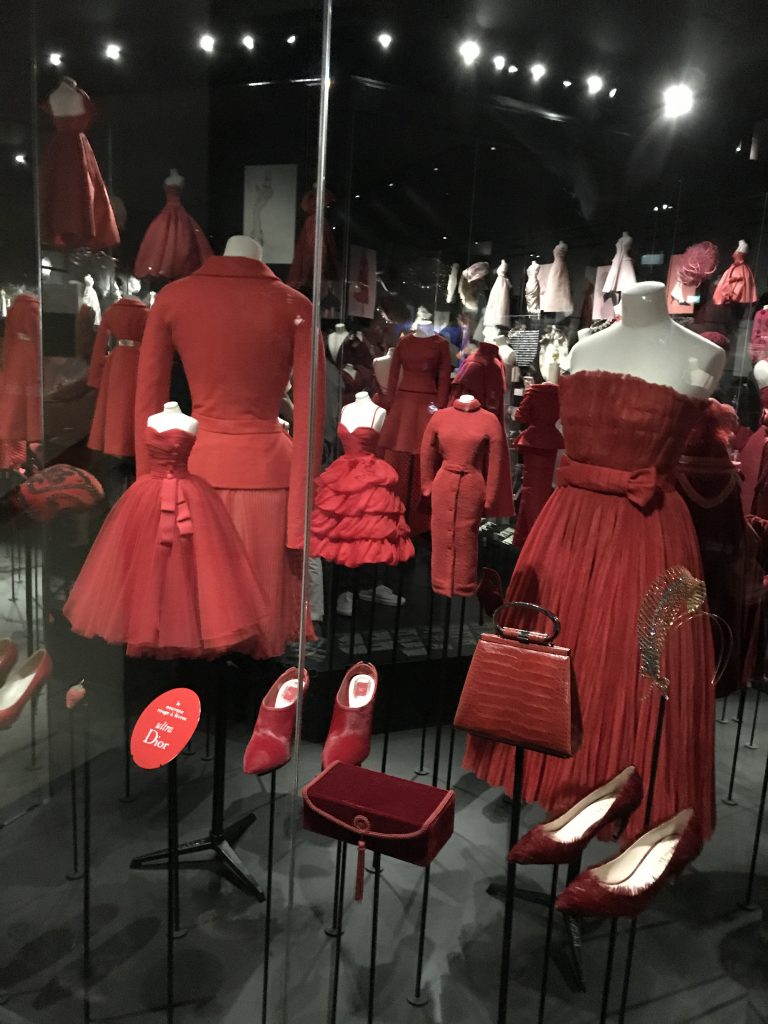
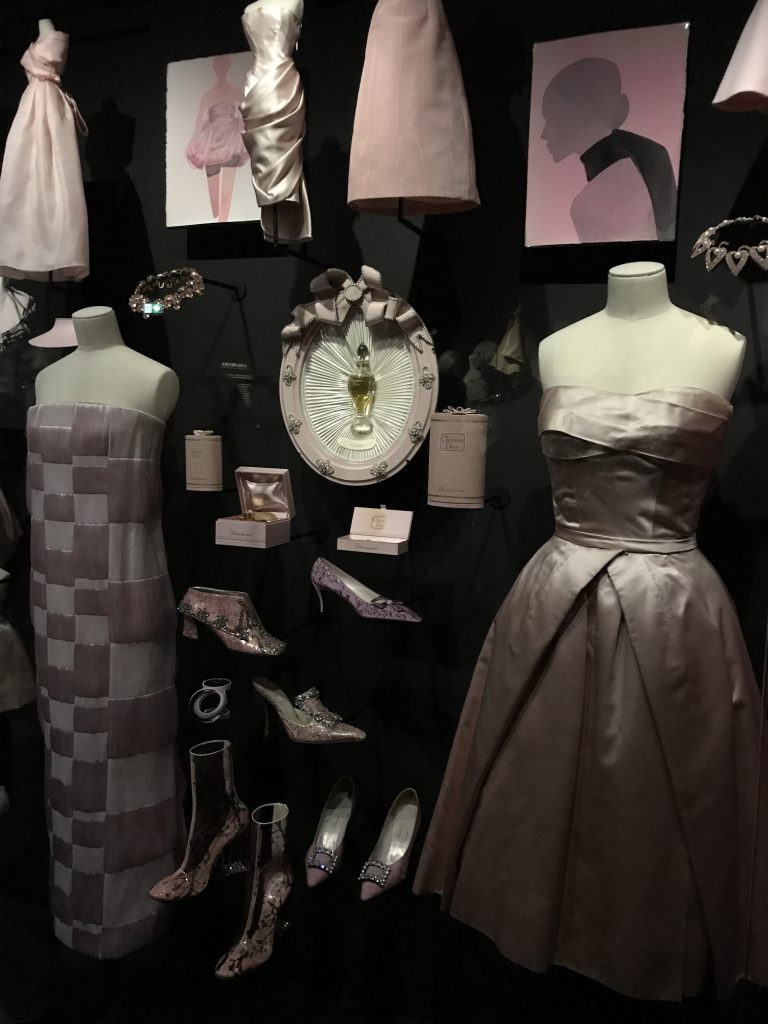
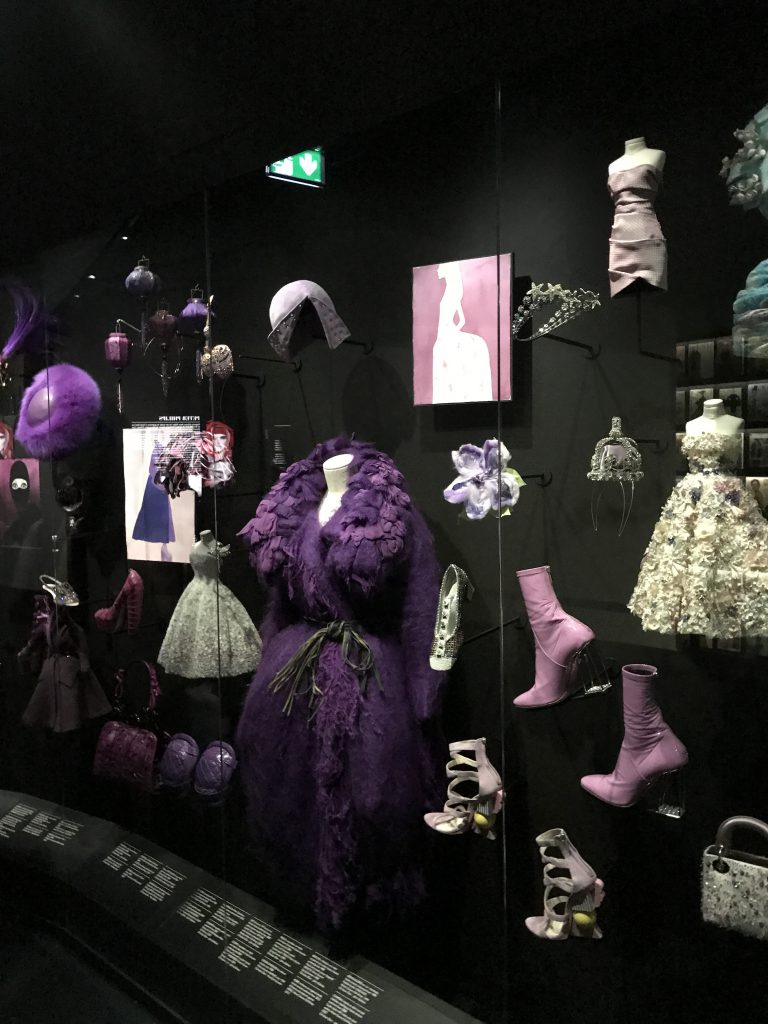
The intricate links of the relationships between Mr Dior’s fashion and perfume creations was also clearly illustrated, as with this Miss Dior display cabinet from the 1950’s inspired by the Temple of Love at the Petit Trianon in Versailles.
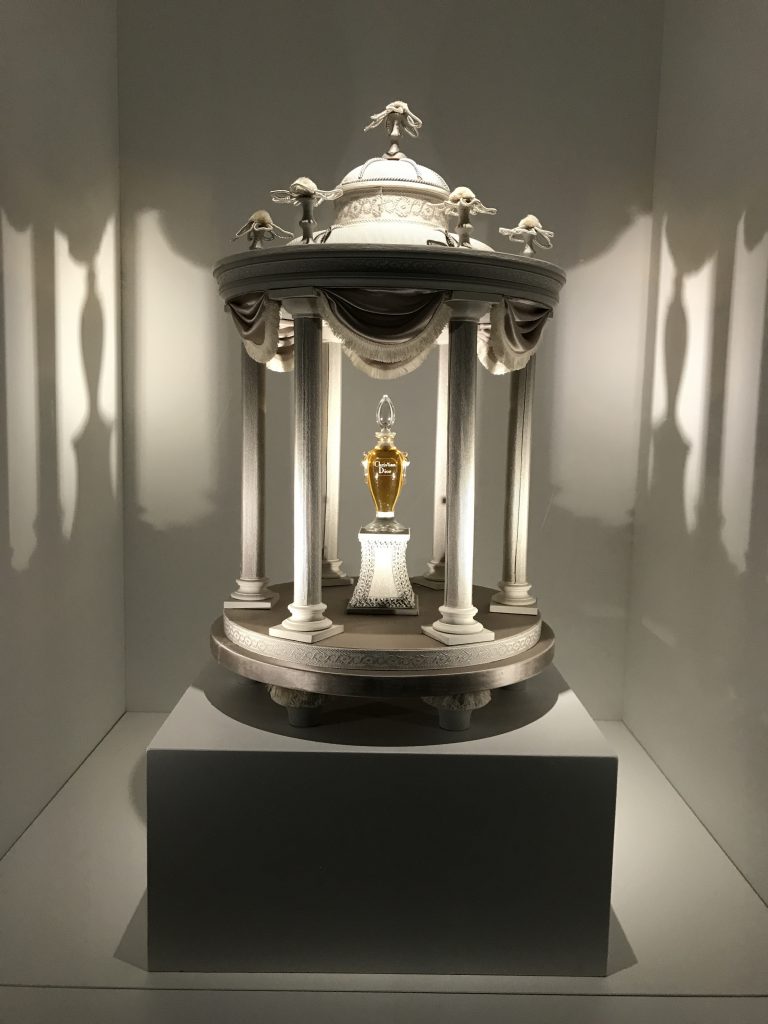
This was the original ‘Miss Dior’ dress, designed by Christian Dior in 1949.
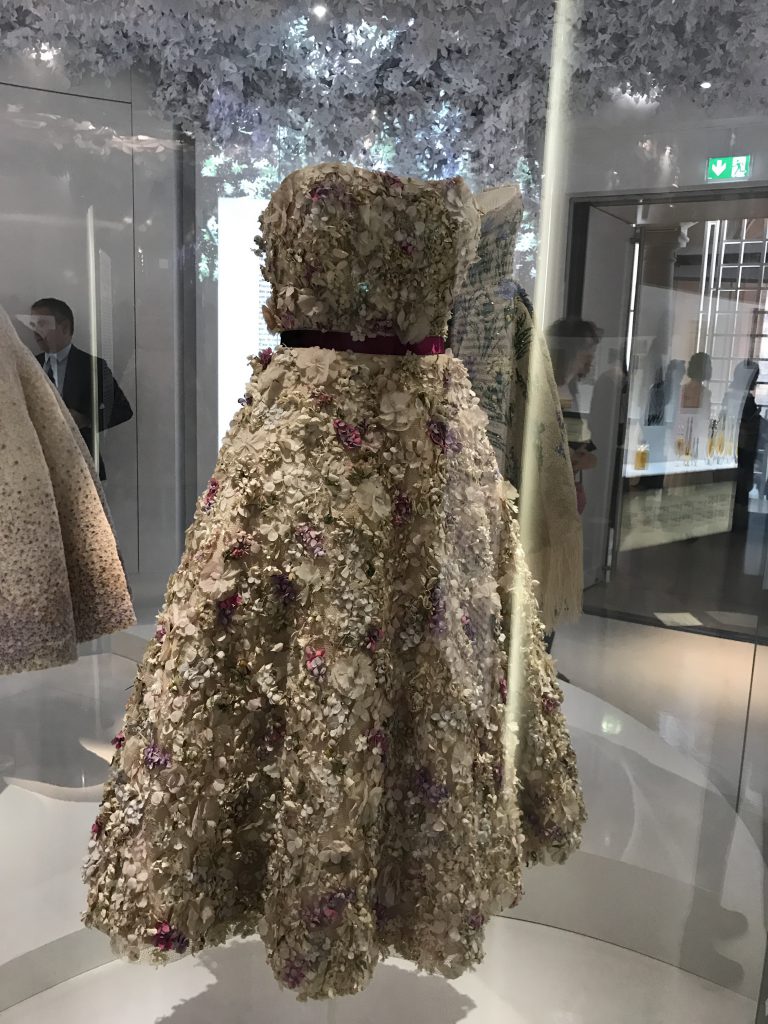
while this Raf Simons creation was worn by Natalie Portman for Miss Dior in 2012,
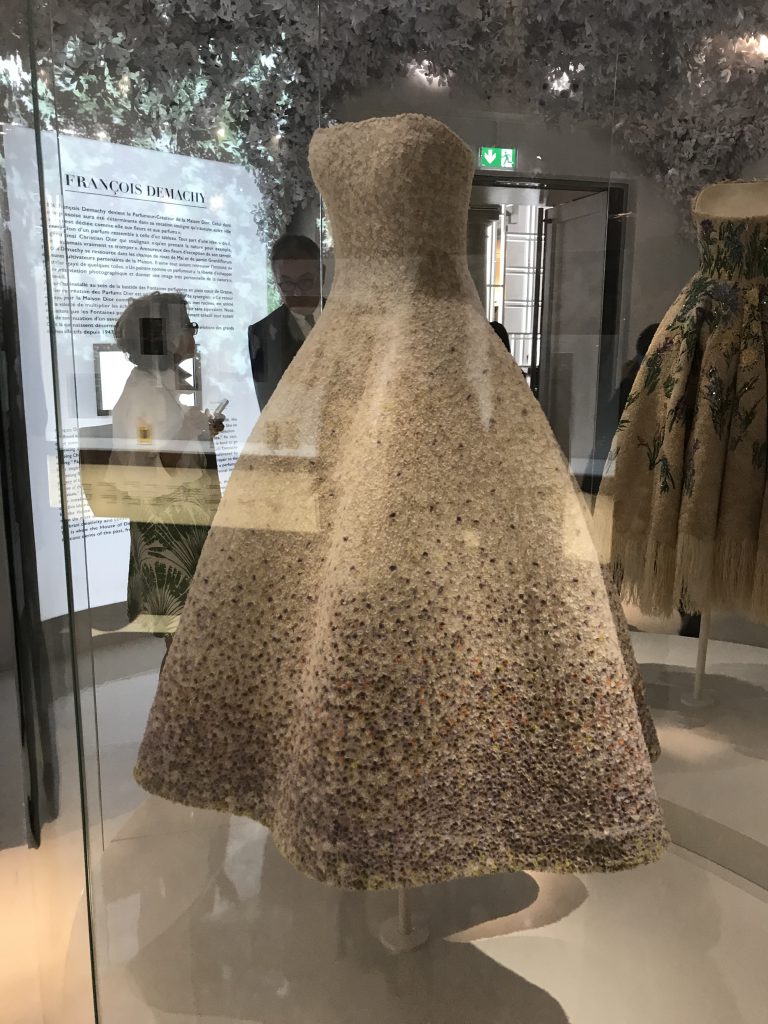
and this creation from Maria Grazia Chiuri’s debut Haute Couture collection was not only worn by Natalie Portman for Miss Dior in 2017, but provided the inspiration for the floral wheat dress outdoors at the garden party.
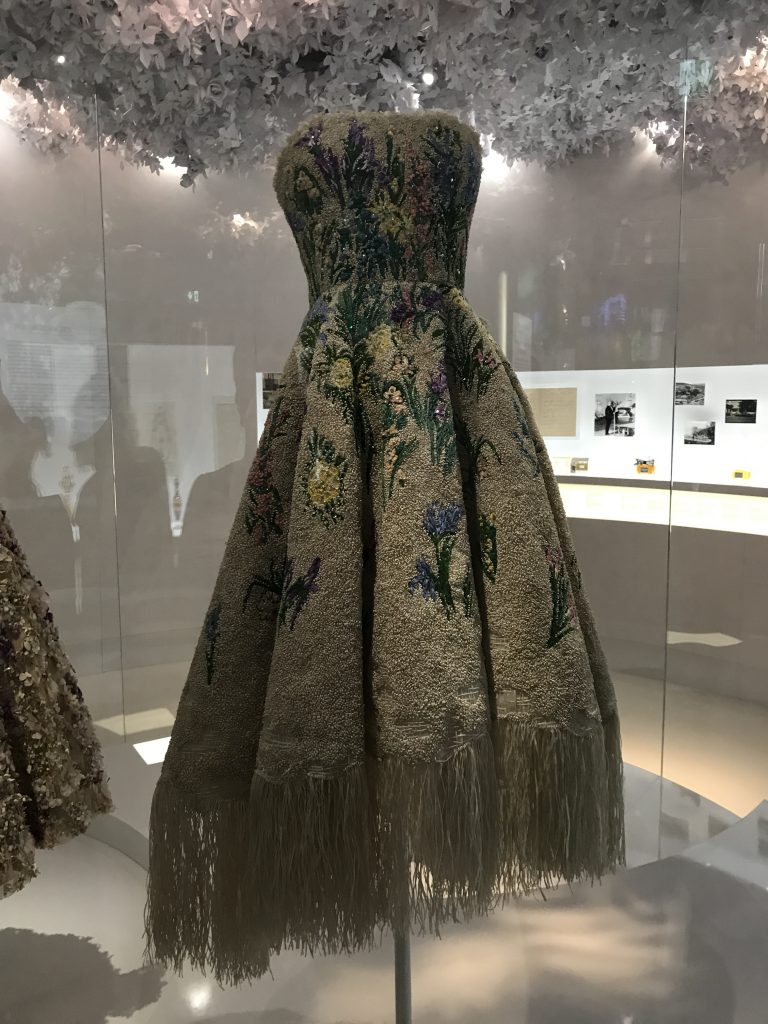
We’d earlier received these beautful flowers in our hotel rooms featuring lily of the valley, along with a note explaning the significance of the flower to the house,
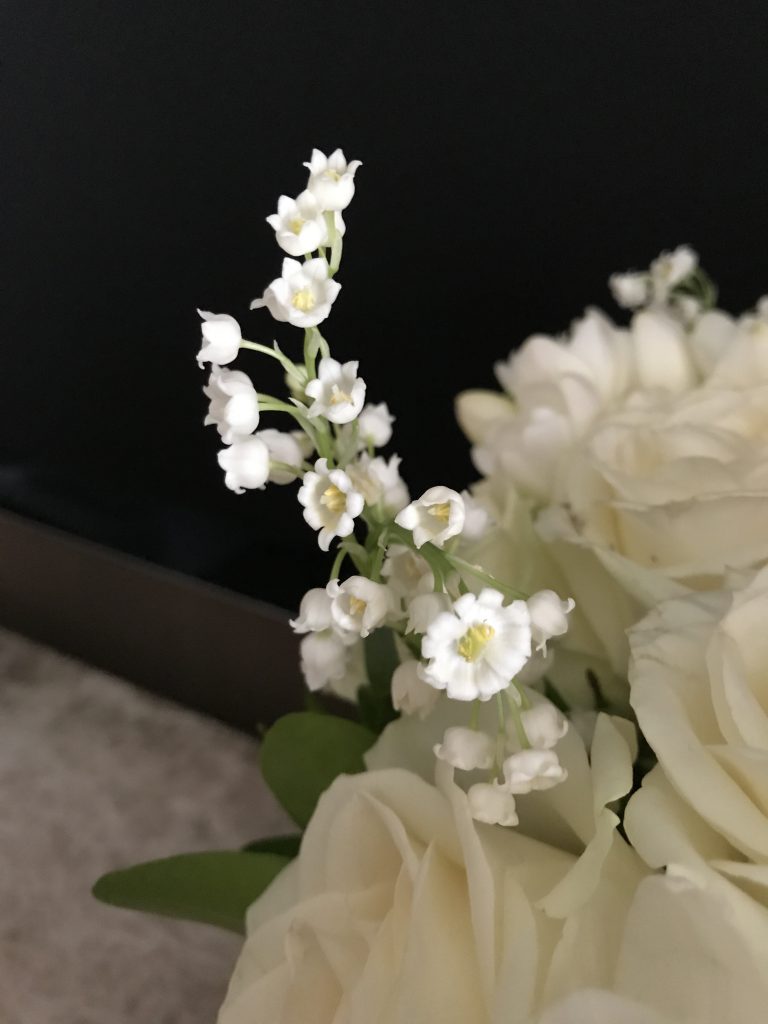
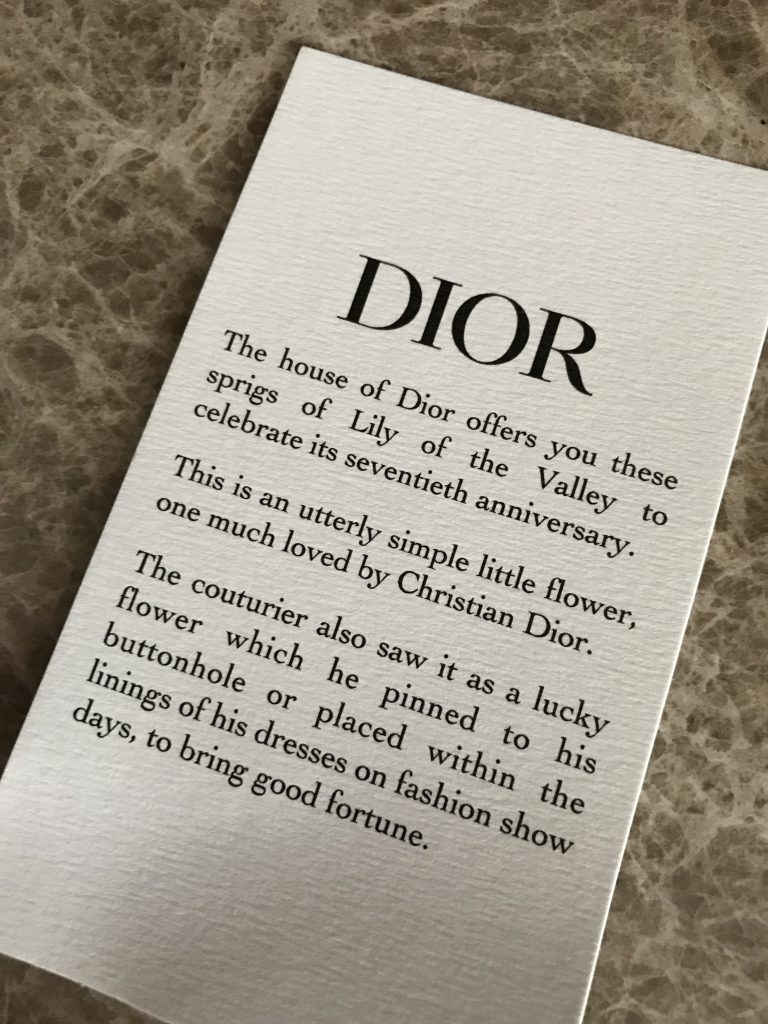
and this love of the lily of the valley was also represented in the exhibition via this 1956 evening dress.
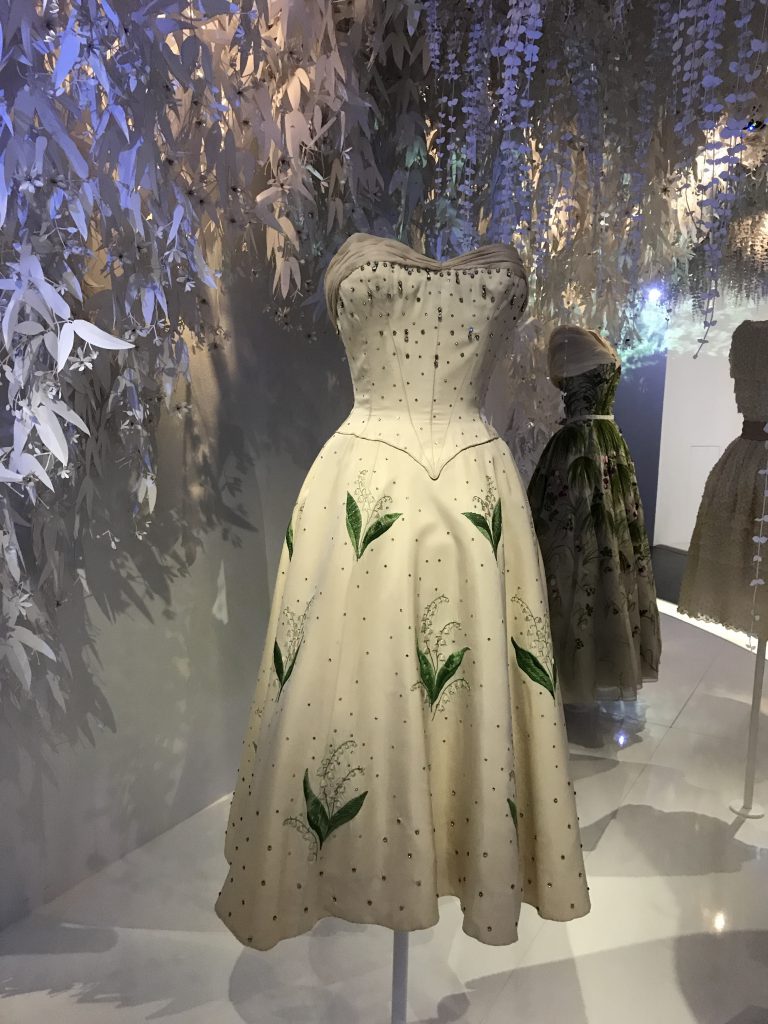
The second half of the exhibition requires passing the iconic Bar suit once again, which takes it’s name from the bar at the Plaza Athenee hotel across the street from Dior’s home in Avenue Montaigne. I hadn’t realised previously that was where the name had originated, but having spent many very pleasant hours in that bar I very much approve!
The Bar suit has been reinterpreted by the different Dior designers, and examples of this form the entrance to the second half before you move through to more deeply explore the work of each designer.
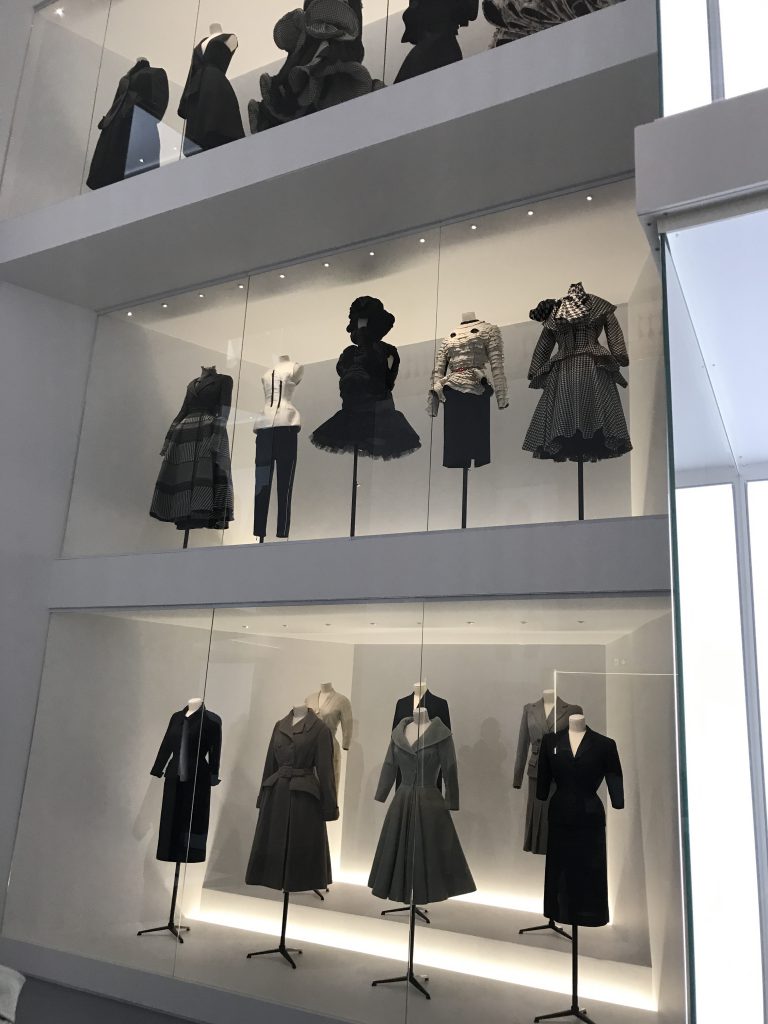
Yves Saint Laurent started as Christian Dior’s assistant in June 1955, and after his sudden death in October 1957 took over as head designer until 1960.
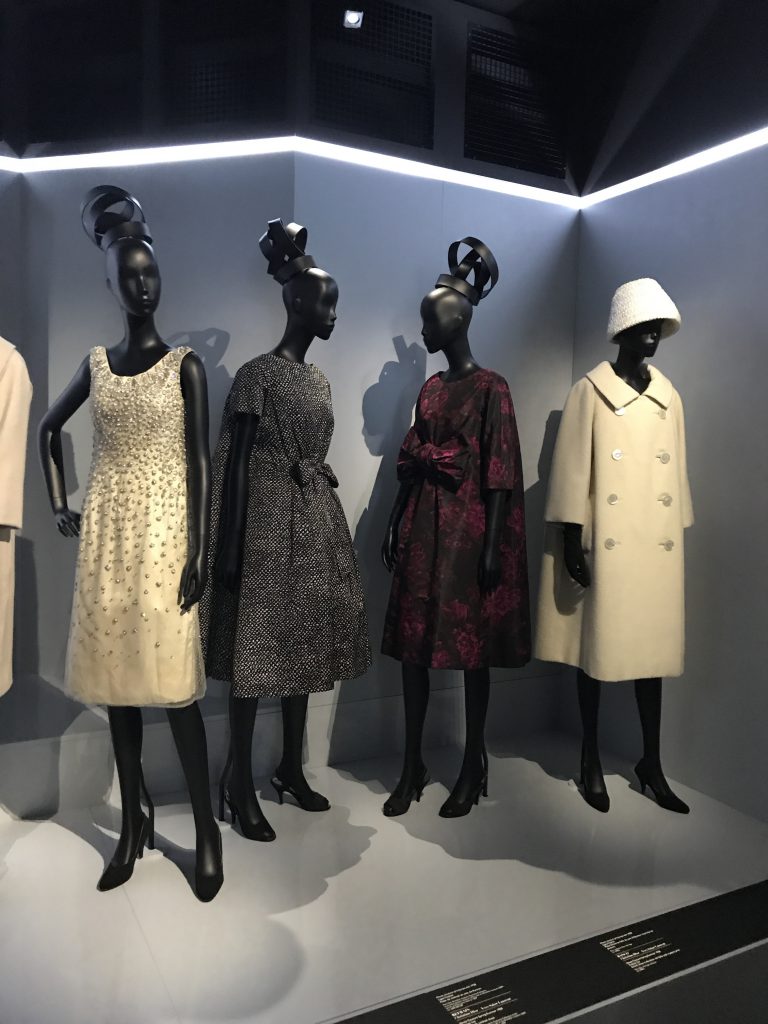
Marc Bohan was at the helm for the following 29 years from October 1960 until 1989,
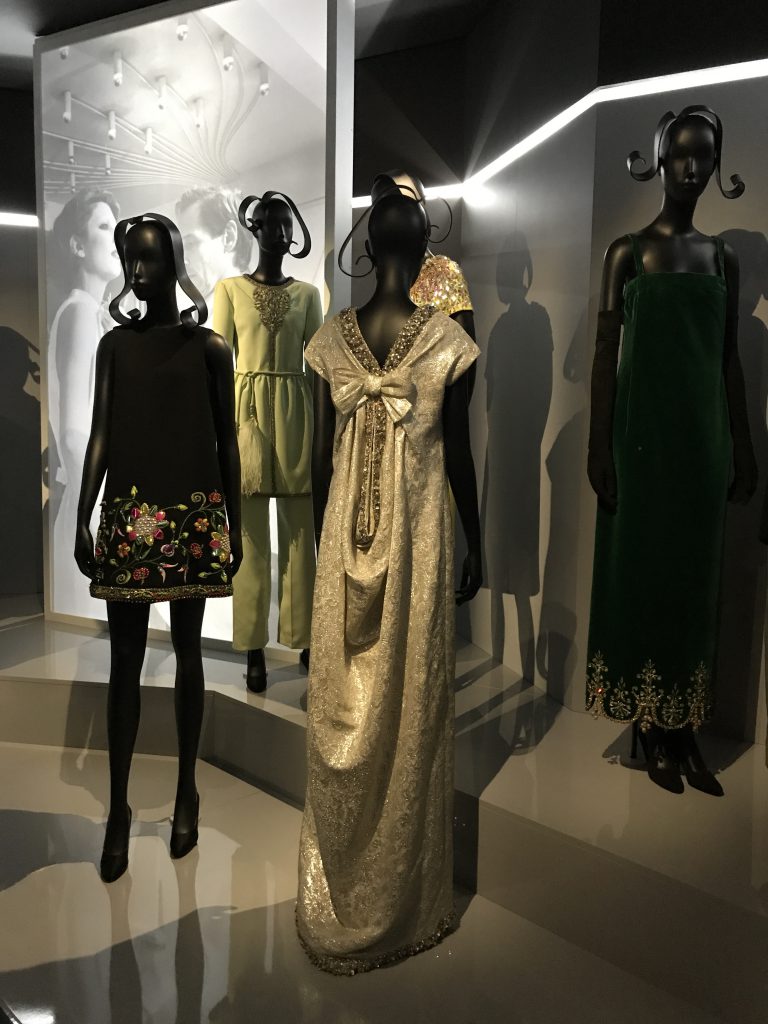
while Gianfranco Ferre reinvigorated the house’s Haute Couture presence from 1989 until John Galliano’s appointment in 1996.
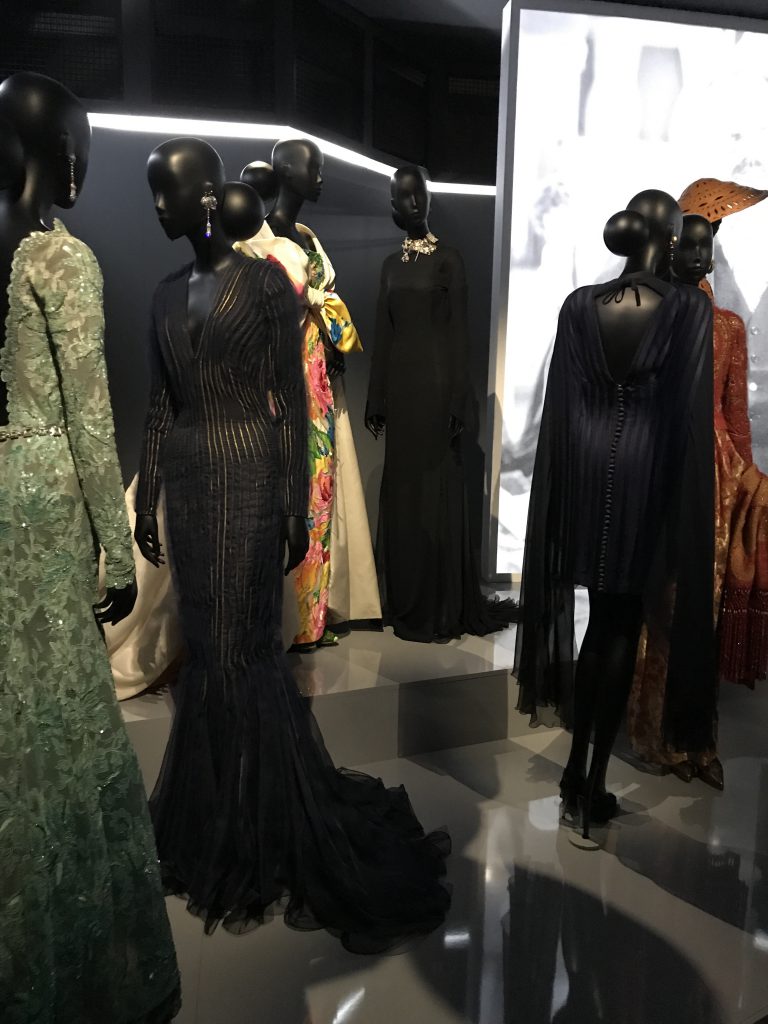
Galliano’s reign from 1996 until 2011 undoubtedly produced some of the most excessive designs in the history of the house, attracting controversy at times and never more so than in the circumstances of his removal, which is not referenced in the exhibition.

Raf Simons appointment in 2012 initially surprised given his reputation for minimalism, but in his 3 years with the house he produced a range of beautiful and heavily embellished collections which made full use of the artisan skills of the house seamstresses.
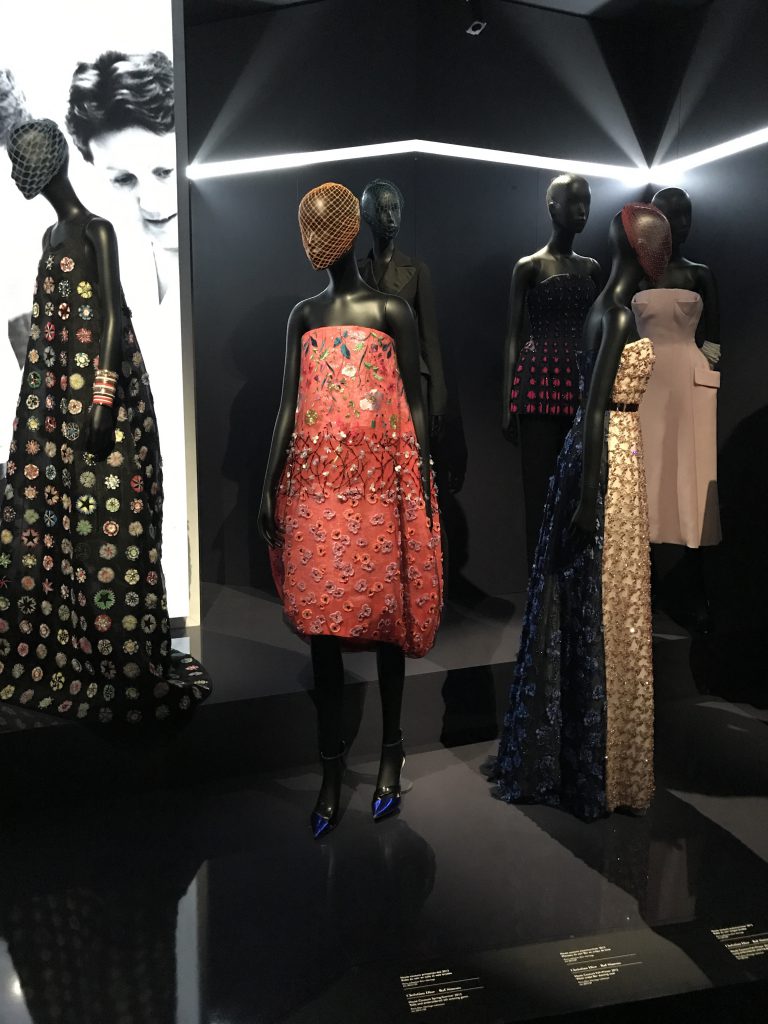
Maria Grazia Chiuri’s appointment in 2016 saw the house’s first female designer and with a goal of wanting ‘the new Dior woman to be desirable, fragile but self-confident, with real inner strength’ she is certainly delivering on that with her initial offerings.
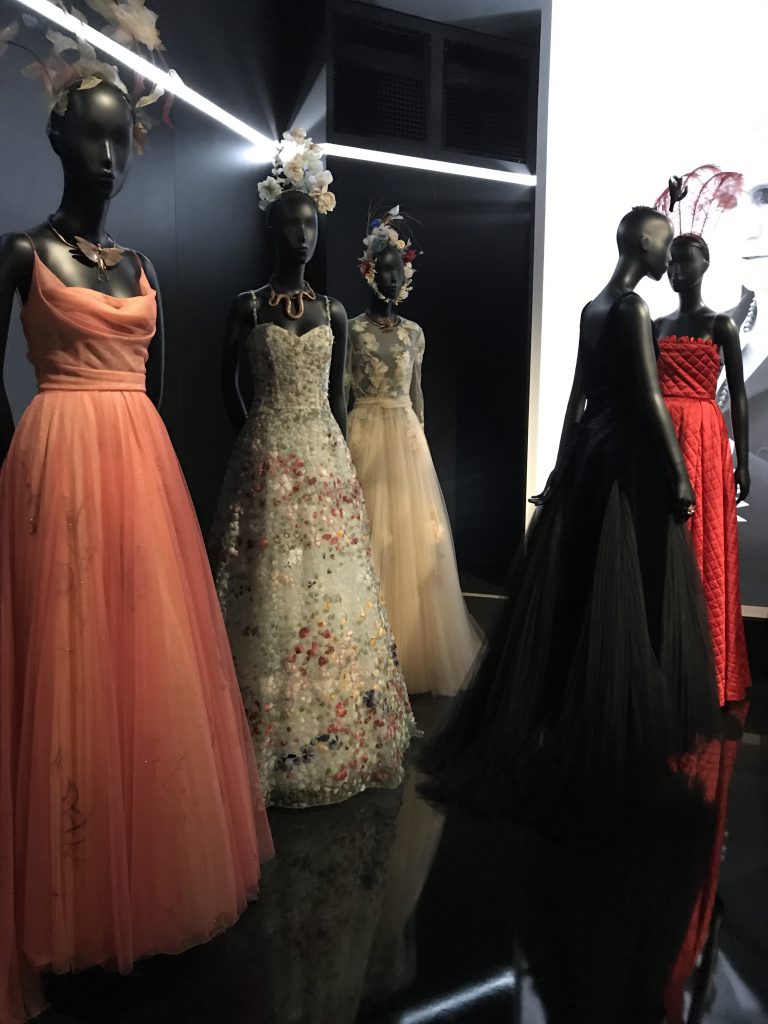

None of these beautiful pieces would be possible without the work of the talented seamstresses who work in the ateliers, and they are not forgotten in the exhibition with a room devoted to the toiles. For the opening evening there were also seamstresses working here, but I suspect that was just a one night only event rather than seeing them relocated here until January!
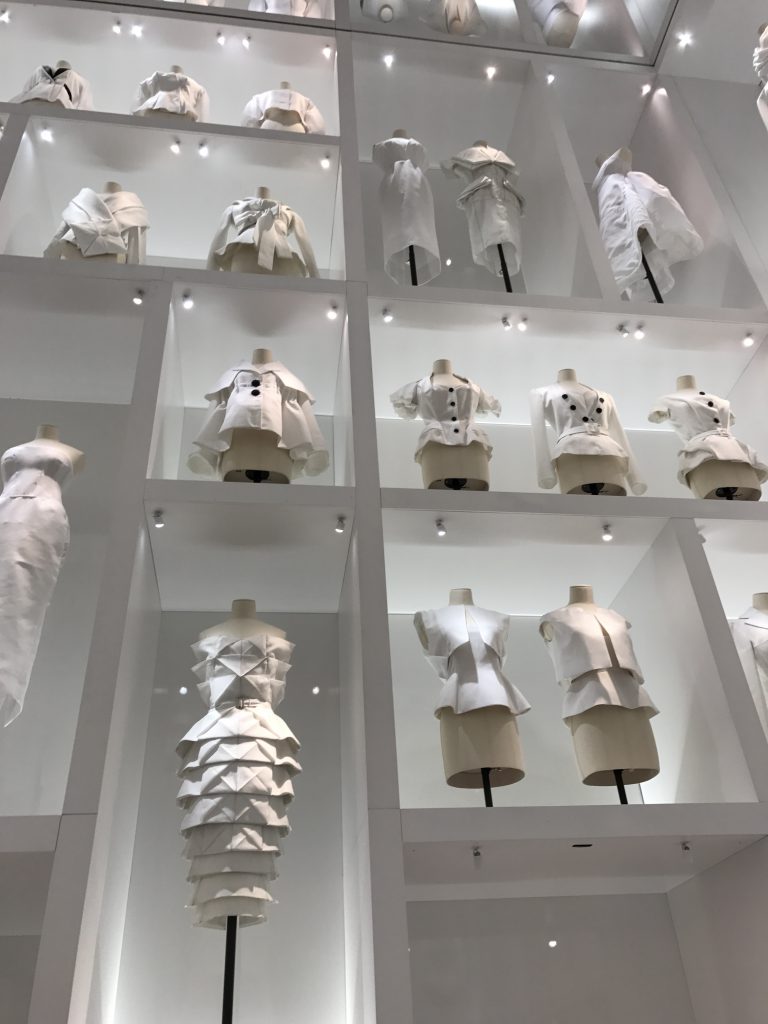
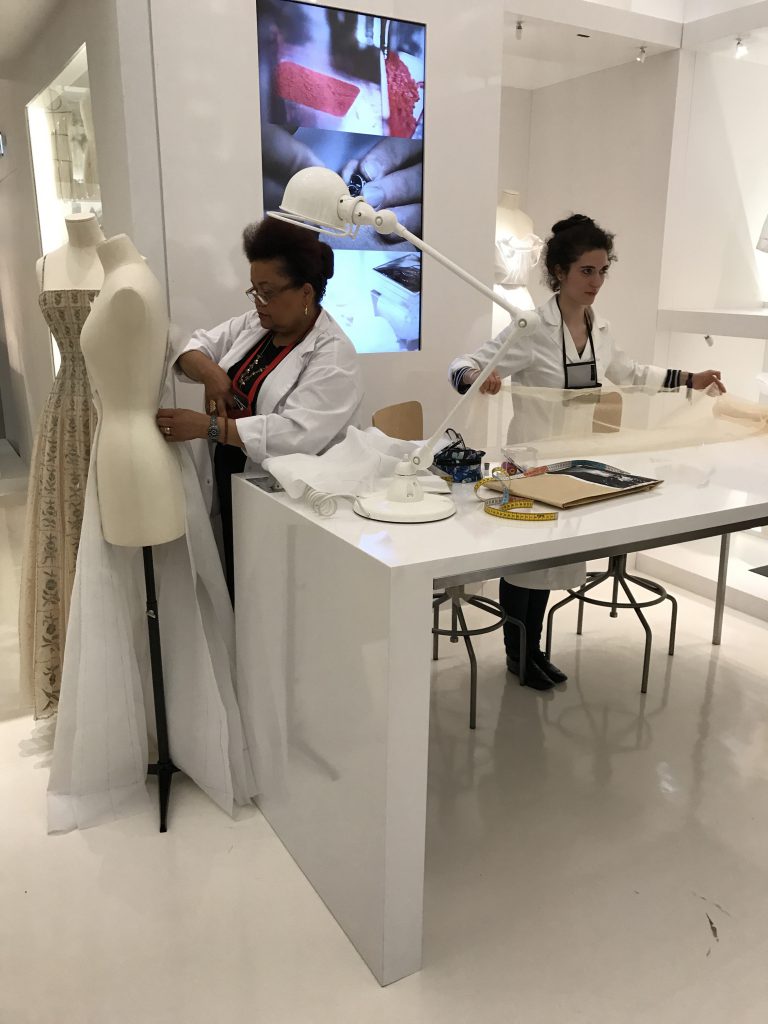
Another team in this room was carefully preparing the bows for the Miss Dior bottles (as also seen in the floral representation outside in the garden – the attention to branding detail is really extraordinary) which we were presented with as we departed.
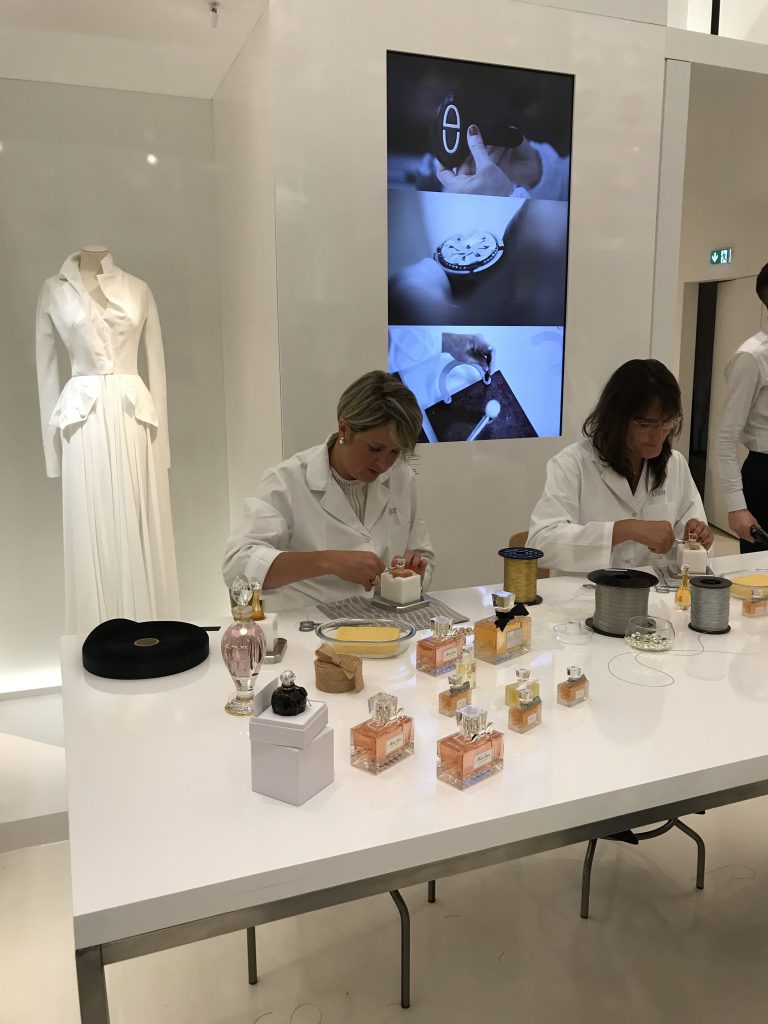

From here it was ball gown territory, with so many beautiful creations on display it was impossible to pick a favorite.

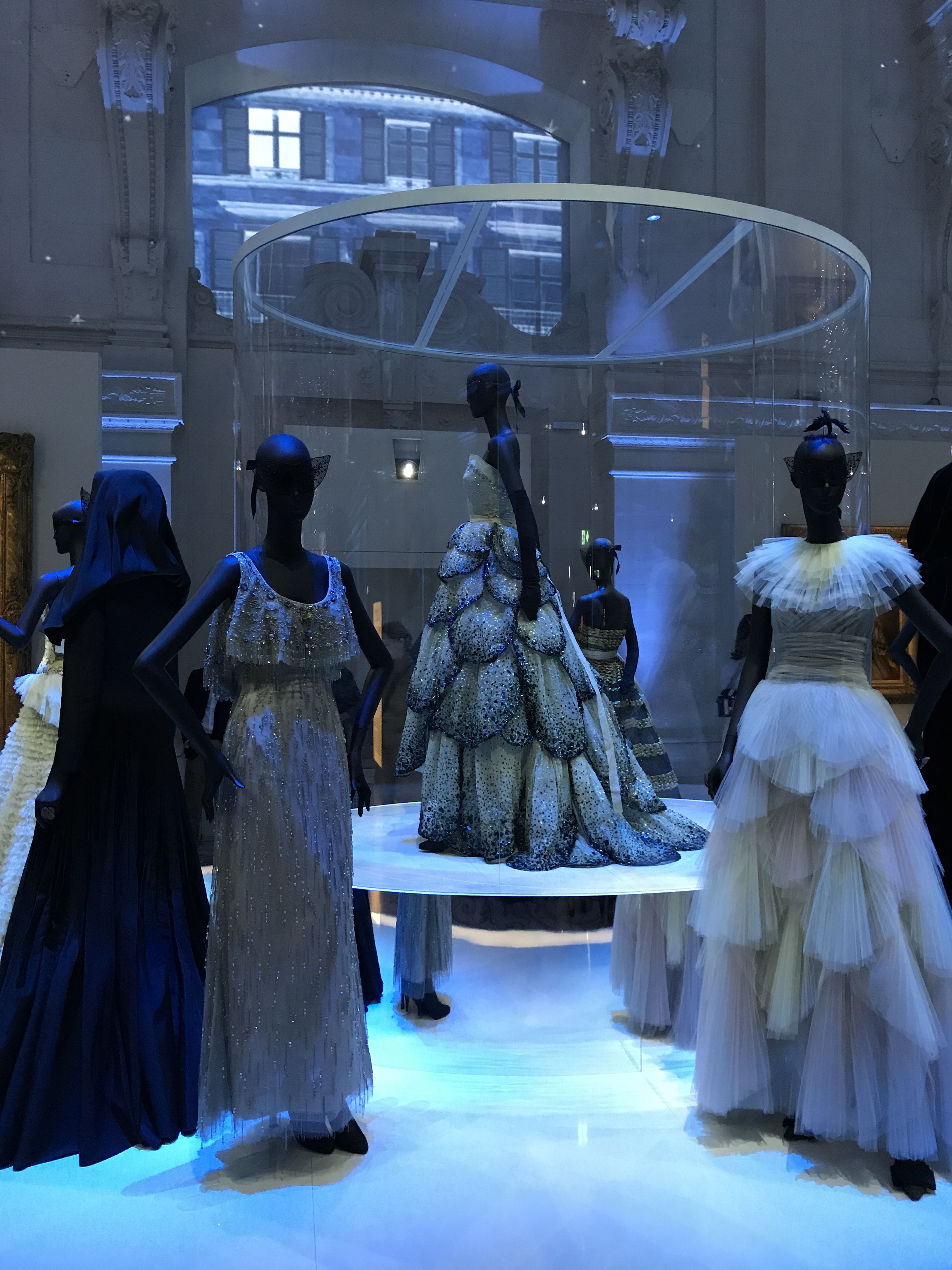
I did have a particular soft spot for this beautiful gown though, having seen it up close at the couture atelier earlier in the week – more on how and why that came about in another post!

The exhibition was incredible, and I could have spent days exploring it instead of the hour or so I had to move through, taking as many pictures as possible to relive it on the flight home. It was total sensory overload, and I definitely want to go back and see it again before it closes in January. The curators have done a remarkable job, I couldn’t recommend it highly enough to anyone visiting Paris.
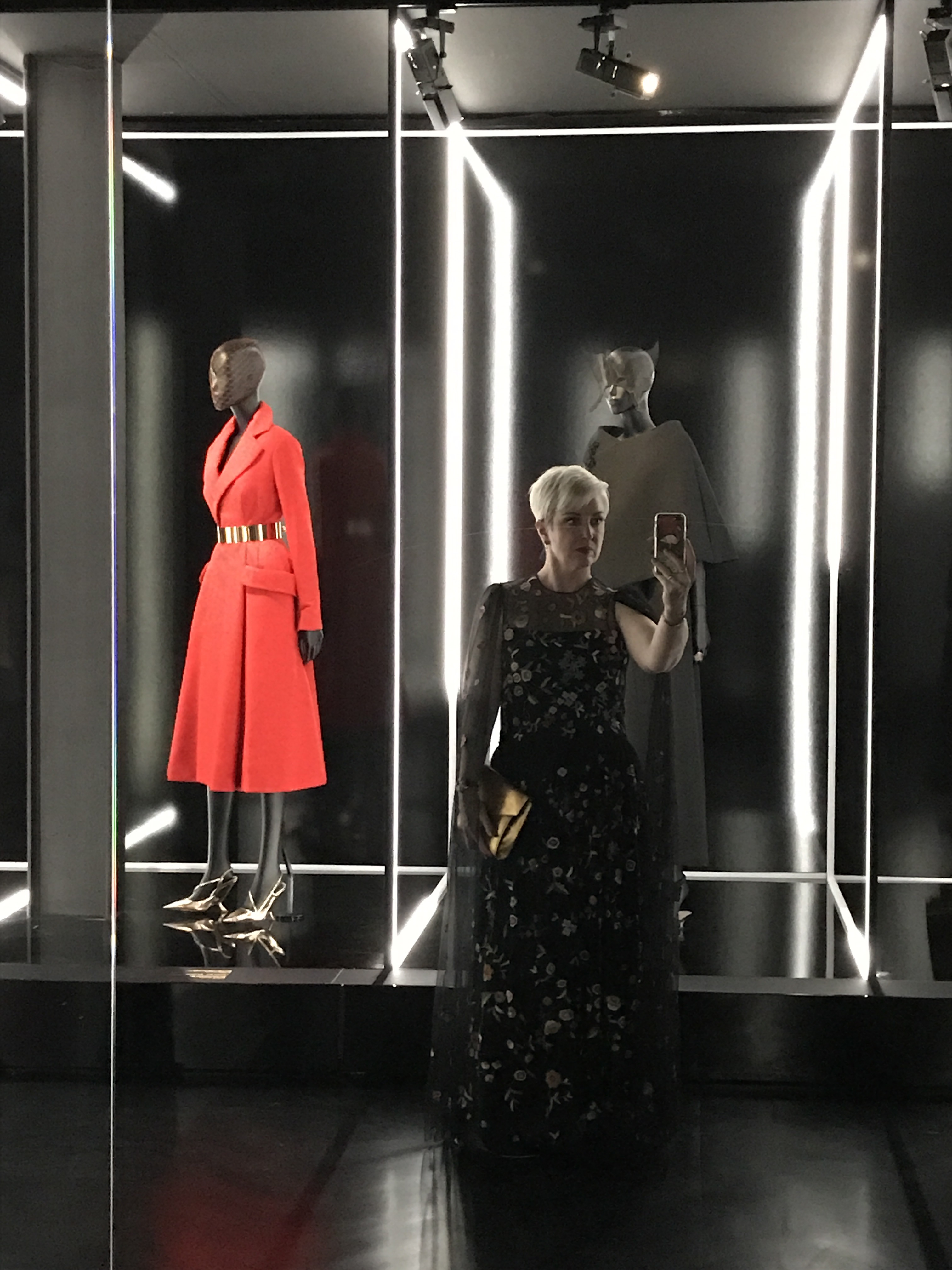
But our day wasn’t quite over yet, as we relocated to the penthouse suite of the Le Meurice, where our elegant dinner was served with this stunning Paris panoramic backdrop.

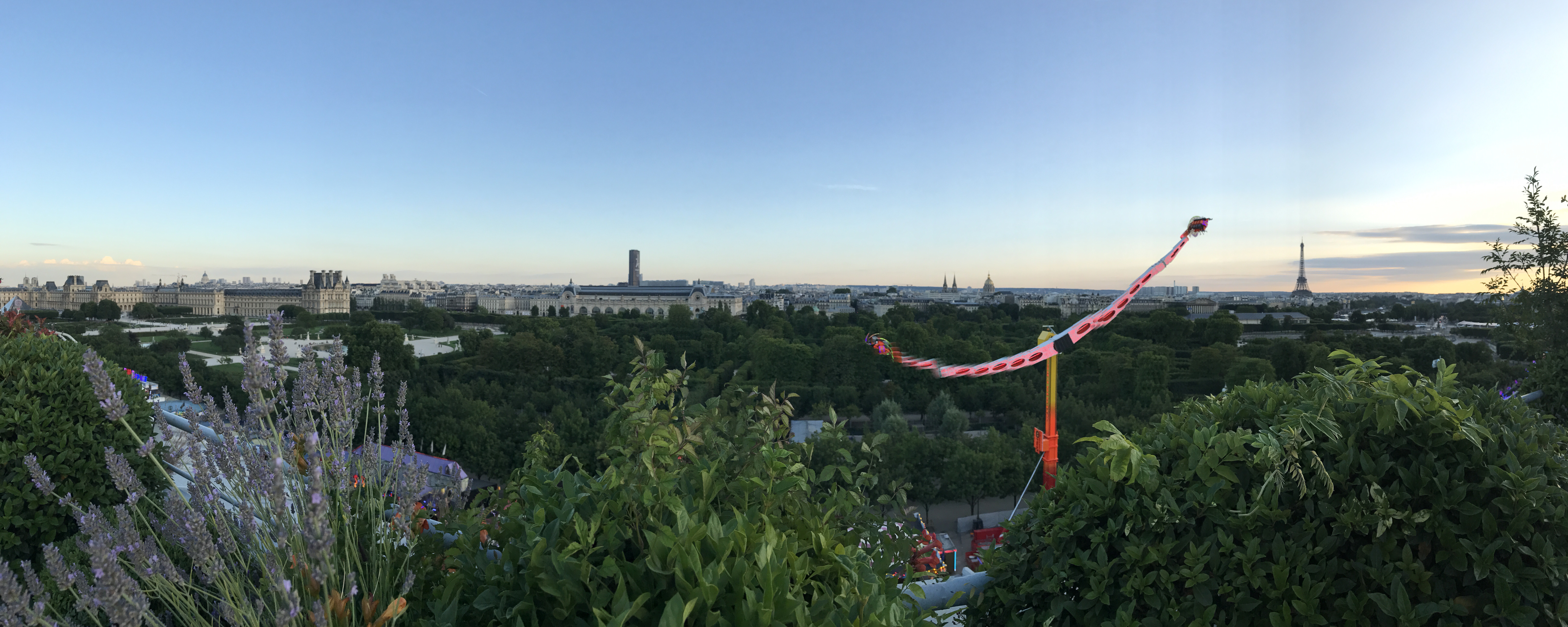
What a day, at least the 24hrs flying time home is providing plenty of opportunity to reflect on what an extraordinary experience this was. J’adior Dior, thank you for an incredible day xxx
